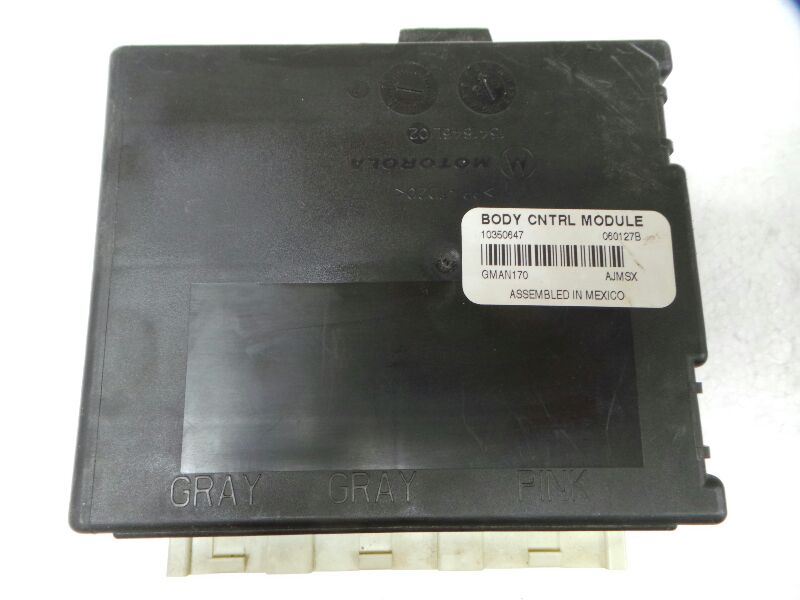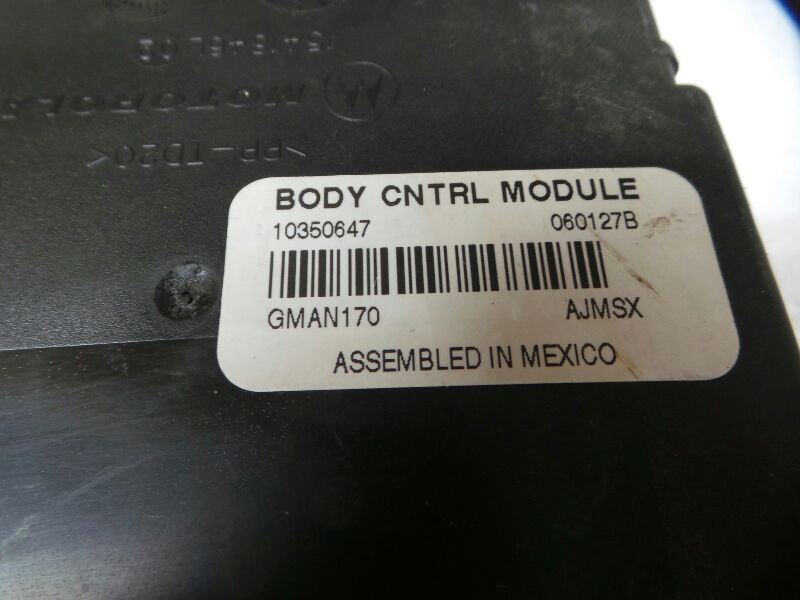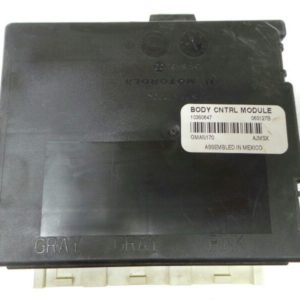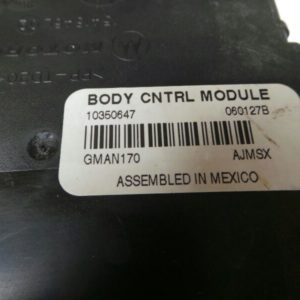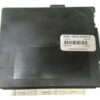Restore Control and Reliability to Your Chevrolet Impala or Monte Carlo
If you’re dealing with the frustrating and unpredictable electrical problems common in 2000-2004 Chevrolet Impalas and Monte Carlos, a failing Body Control Module (BCM) is the likely culprit. As a technician with over two decades of experience, I’ve seen firsthand how a bad BCM can turn a reliable car into a source of constant headaches. From flickering lights and malfunctioning power windows to a car that won’t start due to a security system fault, the symptoms can be maddening. This isn’t just a component; it’s the central command for your vehicle’s body electronics, and when it fails, chaos ensues.
We offer a straightforward, reliable solution. This Body Control Module, compatible with part number 10432571 and others, is professionally programmed to your vehicle’s specific Vehicle Identification Number (VIN) before it ships. This critical step ensures seamless integration with your car’s existing systems, loading the latest GM software to restore original functionality and performance. Unlike a salvage yard part that requires expensive dealer programming, our module arrives ready for installation, saving you significant time, money, and hassle.
Common Signs of a Failing Impala BCM
A faulty BCM can manifest in numerous ways. If your vehicle is experiencing any of the following, it’s a strong indicator that your BCM needs replacement. I’ve diagnosed hundreds of these, and the patterns are often very clear.
- ✔ Erratic or non-functional power windows, door locks, and interior lights.
- ✔ The security or anti-theft light stays on, often causing a no-start condition (a classic GM Passlock issue).
- ✔ Instrument cluster gauges behaving strangely or not working at all.
- ✔ Radio or climate controls operating intermittently.
- ✔ The “Service Vehicle Soon” message appears on the dash.
- ✔ Communication failure codes (like U1000) stored in other modules, pointing to a loss of connection with the BCM.
Case Study: The Haunted 2003 Impala
A customer brought in a 2003 Impala with a list of bizarre complaints. The dome light would stay on, the driver’s window worked only when it wanted to, and twice in the last month, the car left him stranded, refusing to start with the security light flashing. He’d already replaced the battery and checked the fuses. After connecting my scan tool, I saw multiple communication loss codes with the BCM. This is a tell-tale sign. The internal logic of the original module had failed due to age and heat cycles. Installing a VIN-programmed 2000-2004 Impala BCM didn’t just fix one problem—it solved all of them at once. The car was no longer haunted; it was fixed.
A Straightforward Guide to BCM Installation
Replacing the BCM is a manageable job for a confident DIYer. It’s typically located on the left-hand side of the steering column. Here’s a general process to follow:
- Safety First: Disconnect the negative terminal from your vehicle’s battery to prevent any electrical shorts.
- Access the Module: Remove the lower dash panel (knee bolster) below the steering wheel to gain access to the BCM. It’s usually held in by a few screws or clips.
- Identify and Disconnect: Locate the BCM. It will have several large multi-pin electrical connectors. Carefully release the locking tabs on each connector and pull them straight out.
- Remove the Old BCM: Unbolt or unclip the old module from its mounting bracket and remove it from the vehicle.
- Install the New BCM: Mount your new, pre-programmed BCM in the same location. Reconnect all electrical connectors firmly, ensuring they click into place.
- Final Steps & Testing: Re-install the lower dash panel and reconnect the negative battery terminal. Turn the key to the ‘On’ position and test all functions: power windows, locks, lights, wipers, and radio.
Important Post-Installation Note: In some cases, additional steps may be needed. If the airbag light is on, a professional scan tool is required to perform the “Setup SDM Primary Key in BCM” procedure. A brake pedal position relearn may also be necessary for proper brake light and traction control operation. Always consult a factory service manual for specifics related to your vehicle.
Verified Compatibility for Your GM Vehicle
This module is a direct-fit replacement, programmed specifically for your car. It is guaranteed to be compatible with the following vehicles and part numbers, ensuring a perfect match.
Chevrolet Monte Carlo: 2000, 2001, 2002, 2003, 2004
Compatible Service Numbers: 10323612, 10340320, 10350647, 10432318, 10432571, 10438145, 10445875
Frequently Asked Questions
Why do you need my VIN?
Your VIN (Vehicle Identification Number) is essential because it allows us to program the BCM with the exact software and settings your Impala or Monte Carlo requires. This ensures all features work correctly and that the module communicates properly with your car’s other computers, like the engine and transmission controllers.
What is a Body Control Module (BCM)?
The BCM is a computer that manages most of your car’s non-engine related electronic systems. This includes power windows, power locks, interior and exterior lighting, the security system (Passlock), wipers, and the instrument cluster. When it fails, you see a wide range of seemingly unrelated electrical problems.
Do I need to send my old BCM back?
No. There is no core charge for this part. You can keep your original module, which saves you the time and expense of return shipping.
What if my airbag light comes on after I install it?
This can occasionally happen. It means the new BCM needs to be electronically ‘introduced’ to the airbag system’s computer (SDM). This requires a professional-grade scan tool to perform a quick procedure called ‘Setup SDM Primary Key in BCM’ to sync the components and turn off the light.
Is this a difficult part to install myself?
For someone with basic mechanical skills and tools, it’s a very manageable job. The module is located under the driver’s side dashboard and involves removing a trim panel and swapping a few electrical connectors. Our pre-programming service eliminates the most difficult part of the job, which is the software configuration.
